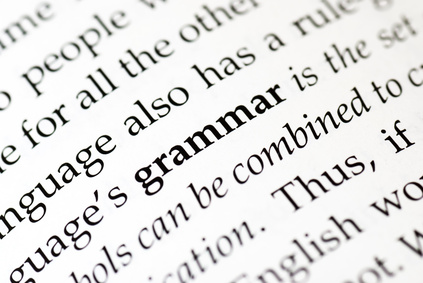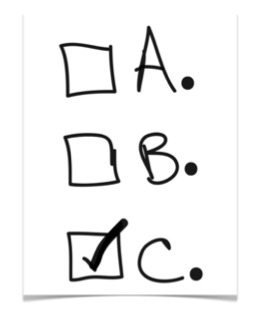The following article is an excerpt from my e-book SAT Grammar Crammer: Top 12 SAT Writing Rules. To improve your SAT score, order your copy today!
Pronoun Number: “They an’ he” ain’t called “we,” or else a pronoun mistake there’d be
On the grammar portion of the SAT Writing section, Pronoun Number is very closely related to the chapter on Subject-Verb Agreement.
Like that previous topic, Pronoun Number deals with proper selection of singular and plural forms of words. This topic is related to Pronoun Case rules as well.
Pronouns are common non-specific words that replace specific nouns to avoid making a sentence too repetitive.
The most common pronouns are, in no order: I, me, you, he, him, she, her, it, they, them, us, we.
You know all this. Instead of saying “Christian likes to drive Christian’s car,” I would say “I like to drive my car.” Instead of:
“Jason went with Jason’s friends down to the lake, where both Jason and Jason’s friends held a party for Jason and Jason’s friends’ graduation,”
…we’d naturally use pronouns to avoid repetition, like so:
Get Exclusive SAT Prep Tips!
I want to send you more tips to help your SAT score, but I need your email address to stay in touch. Enter your email below so I can send you my reports on the SAT and other subscriber-only bonuses.
“Jason went with his friends down to the lake, where they held a party for their graduation.”
After the first time we’ve mentioned “Jason,” we can start replacing it with “he/him/his,” and after the first time we use “his friends,” we can start replacing it with “they/them/their.” That’s the power of pronouns.
HOWEVER: Let’s get one thing out of the way: Pronouns in the SAT grammar section are ALWAYS SUSPICIOUS. They are GUILTY until proven INNOCENT. That’s because there’s just so darn much that can go wrong when pronouns are involved.
First and foremost, it must be clear what a pronoun is referring to.
Because pronouns are non-specific by nature, there is plenty of room for confusion. If you can’t tell exactly what a pronoun is referring to from the sentence with a minimum of thought, it’s probably already wrong.
Here’s an example of such a situation:
“Mr. Johnson and Mr. Heidi both agree that he should go to the party after all.”
“He” could refer to either Mr. Johnson or Mr. Heidi, so this pronoun is WRONG! This pronoun error is pretty common on the SAT, but not nearly as common as the next topic:
Pronouns must also match the thing they replace in number (singular/plural)!
Some pronouns are always plural. Some pronouns are always singular. No pronoun can be both singular and plural; they all fit in to one column or another.
Many times you can use common sense. Only one “he,” so singular. “They” is several people, so it’s plural. “It” is singular. “We” and “us” are plural because there are at least two people involved. Let’s look at an easy example of a Pronoun Number mistake:
“We is going to the rodeo later today.”
Step One: Be suspicious of all pronouns. I see a “we” hanging out that could cause trouble.
Step Two: Be sure the pronoun is clear about what it refers to. Ok, there’s no room for confusion here; “We” must refer to the speaker and anyone going with him or her to the rodeo. There aren’t any other “we”s in the sentence that could get mixed up. Let’s move on.
Step Three: Check singular/plural agreement. “We” is plural, but “is” is singular. Big mistake! “We are” would work, and something like “He is,” would also work, but no way will “We is” ever be acceptable.
Pronouns and verbs must match in number: This is exactly the same idea as in the Subject-Verb Agreement topic. Singular pronouns must connect to singular verbs, and plural pronouns with plural verbs.
What about “tricky” pronouns – are they singular or plural? The SAT doesn’t always pick the easy pronouns, like “he” and “us.” There are many other pronouns. Some are obviously singular or plural, but others are a little tougher to figure out….
To get the complete text of this SAT Writing and Grammar lesson, along with two diagnostic tests and over two hundred SAT Writing practice questions, purchase your copy of SAT Grammar Crammer: Top 12 SAT Writing Grammar Rules today!
Further Reading:
What exactly is on the SAT Writing Test?
SAT Writing Rules: Subject-Verb Agreement
SAT Writing Rules: Pronoun Case
Additional Resources:
SAT Grammar Crammer: Top 12 SAT Writing Rules (e-Book)
Wait! Before you go, sign up for my SAT email list so I can send you free subscriber-only content to help you prepare for test day – only from eSATPrepTips.com!

















Find Me on Social Media